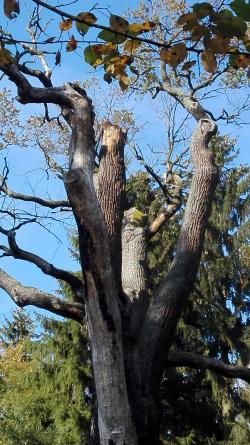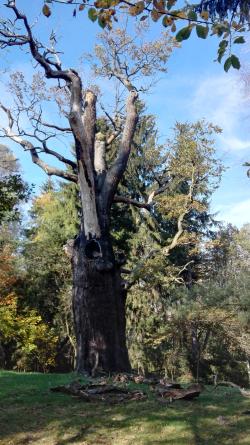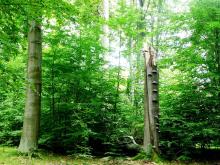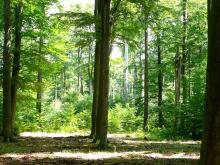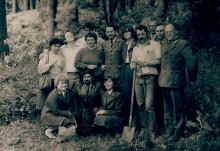 Asset Publisher
Asset Publisher
Tourist Attractions
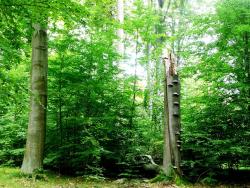 Rezerwat przyrody "Annabrzeskie Wąwozy". Fot. Jerzy Wilanowski
Rezerwat przyrody "Annabrzeskie Wąwozy". Fot. Jerzy Wilanowski
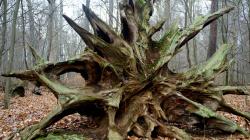 Lasy Nadleśnictwa Szprotawa. Fot. Sebastian Zapolski
Lasy Nadleśnictwa Szprotawa. Fot. Sebastian Zapolski
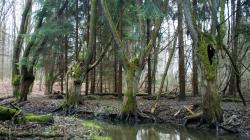 Lasy Nadleśnictwa Szprotawa. Fot. Sebastian Zapolski
Lasy Nadleśnictwa Szprotawa. Fot. Sebastian Zapolski
 Lasy Nadleśnictwa Szprotawa. Fot. Sebastian Zapolski
Lasy Nadleśnictwa Szprotawa. Fot. Sebastian Zapolski
 Tablica informacyjna przy dębie "Chrobry"
Tablica informacyjna przy dębie "Chrobry"
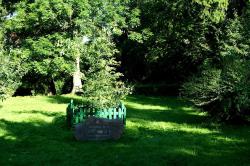 Jeden z Dębów "Papieskich". Fot. Jerzy Wilanoski
Jeden z Dębów "Papieskich". Fot. Jerzy Wilanoski
Nature reserves being sanctuaries for many protected plant and animal species, a 750-year-old natural monument (the oldest tree in Poland) or various forms of wildlife conservation that will amaze any nature lover – these are only some of the natural attractions that can be admired in the forests of Szprotawa Forest District.
750-year-old Pedunculate Oak named "Chrobry" is an exceptional specimen of the species on national scale.This unique natural monument grows in the Lower Silesian Wilderness, in the vicinity of "Buczyna Szprotawska" Nature Reserve, close to the village of Piotrowice and surprises the visitors with its massive size.
"Buczyna Szprotawska" Nature Reserve being habitat for an extremely rare species, Edible Dormouse, is a must see as it is the largest reserve managed by Regional Directorate of the State Forests in Zielona Góra.
Other places of interest include:
- "Annabrzeskie Wąwozy" Nature Reserve,
- "Park Słowiański" Landscape-Nature Protected Complex,
- Bóbr Valley, Dalkowskie Hills, Brzeźnica Valley, Szprotawka Valley and the Lower Silesian Wilderness – all qualified as nature parks,
- Lower Kwisa Valley, Szprotawsko-Piotrowicka Beech Wood, Borowina (Peloid), Małomickie Riparian Forests, Przemkowskie Ponds and the Lower Silesian Wilderness – all of them included in the network of "Natura 2000" Protected Areas,
- as well as areas of protected ecology, such as Owl's Bog, Crane's Bog, and Swan Ponds.
Szprotawa Forest District can boast an excellent network of bicycle trails.
Szprotawa Forest District also includes a network of walking trails designed by PTTK (Polish Tourist and Sightseeing Society) in Żary that combines natural and historic attractions of the area in a tourist-friendly form.
 Asset Publisher
Asset Publisher
CHROBRY SZYKUJE SIĘ DO ZIMY…
CHROBRY SZYKUJE SIĘ DO ZIMY…
Od pożaru dębu „Chrobry” minęło już niemal trzy lata. Do podpalenia doszło 19 listopada 2014 roku.
Ogień podłożony był we wnętrzu drzewa (pień jest pusty od środka), a następnie przeniósł się przez otwory po usuniętych w latach poprzednich, suchych konarach na stronę zewnętrzną pnia oraz koronę. W związku z powyższym opalona została zarówno zewnętrzna strona pnia jak i jego środkowa część.
Mimo, iż w na skutek pożaru dąb doznał rozległych uszkodzeń, to w minionym okresie wegetacyjnym ulistnienie rozwinęło, się podobnie jak w latach ubiegłych na ¼ głównych konarów. Na ulistnionych konarach nie zaobserwowano dotąd zewnętrznych oznak chorobowych (ubytki kory, owocniki grzybów). Pozostała część korony drzewa jest martwa, pozbawiona całkowicie ulistnienia. Na martwych konarach widoczne są ubytki kory oraz owocniki grzybów.
Przechodzący nad Polską 5-6 października br. orkan Ksawery, również nie oszczędził dębu „Chrobry”. Na skutek porywistych podmuchów wiatru obłamał się jeden z obumarłych, a tym samym kruchych konarów.
Aktualny stan drzewa ilustrują zamieszczone poniżej zdjęcia.
Tekst: Tomasz Śmigielski
Zdjęcia: Dariusz Chełski




